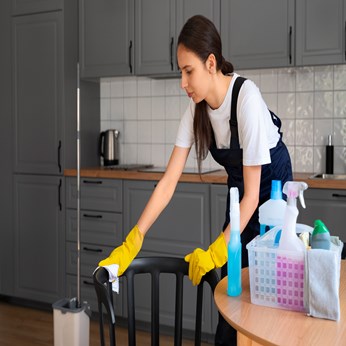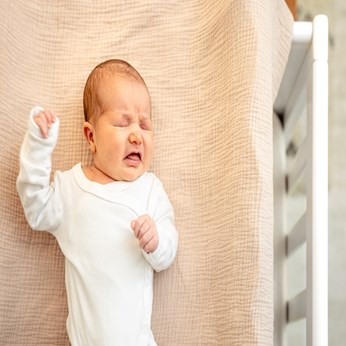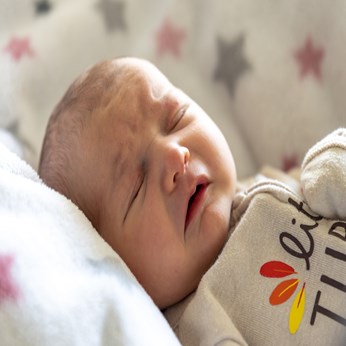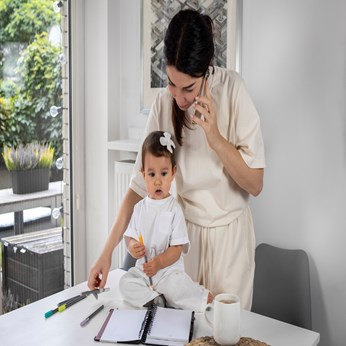Nappy Care - All You Ever Needed To Know About Nappies

Nappy care, an essential care of infants, helps parents to know not only how to change napkins, but to also the best way to protect babies from infection and discomfort. Once learnt it soon becomes second nature. Most parents need to realize that newborns need more frequent nappy changes as they dirty a nappy after and during each feed.
Here are a few things worth noting about nappy and nappy care:
The first few napkins of a newborn would contain stools that are thick, sticky and black or dark green in color; containing me conium, the color will soon turn to greenish brown and then yellow as the infant starts feeding on milk. Most hard to clean, parents should make sure to protect the newborn’s clothing or blanket.
The stools of breast fed babies are generally loose, of grainy mustard consistency and smells sweet in a range of colors from yellow green to bright yellow. Consult the doctor if the stools are more green than yellow. It is observed that breastfed babies rarely suffer from constipation.
Smelly, brownish yellow molded stools are produced by formula-fed babies; loose and watery stools signify diarrhea and hard pellet like stools constipation.
Keep your baby and yourself comfortable by change a baby’s nappy after every poo or stools; unless absolutely necessary avoid changing the nappy at night as the sleepy baby could turn wide awake.
The use of disposable or washable nappies is a question of one’s own preference and environmental issues. Disposable nappies and washable ones are both polluting due to creation of huge amount of waste and washable material respectively. They cost almost the same though washable nappies require an upfront initial outlay and a dedication to use them; washable napkins are also to be changed more often and could be more difficult to dry if you do not have a drier.
How to change a baby’s nappy:
• Cleanliness and hygiene is to be adopted in changing the nappy of your baby. First wash your hands and then lay the baby on the back on a mat and raise his/her vest and remove socks and booties; most babies love to kick away at their dirty nappies and create a mess that is difficult to clean.
• Next inspect the contents of the old nappy and lift his/her legs gently with one hand to clean; know that baby boys wee in the air when their penises are exposed, while girls are a bit less dramatic.
• If there is poo and stools pull the front part and use the inside to clean up the baby’s bottom; prevent sores by wiping away the wee also. Remember to wipe from front to back for girls so that the genitals do not get infected. Fold the nappy and keep aside for disposal.
• Sometimes babies may develop a red, sore area around the bottom caused by the ammonia in urine and due to the sensitivity of some baby’s skin. Known as nappy rash, apply a barrier cream to help keep bacteria at bay. Let the baby kick with a bare bottom for several minutes a day by putting down a towel to soak up any unexpected leaks. Avoid talcum powder as the baby could inhale the dust and develop breathing problems.
• Next open the new nappy and fasten at waist making sure to do it below the belly button if the baby still has the cord clamp. Put on the baby’s clothes.
• Lastly do not forget to wash your hands again.
Hope you are well equipped with nappy care to bring up a healthy and happy baby.
Take the next step toward your goals
Share your requirement and find the best care providers in your area
-
Looking for a caretaker’s job? Build your profile and get in touch with families in your vicinity.
-
Discover nannies, babysitters, cooks, housekeepers, pet sitters, and elder care under one roof.
-
Get all the support you need to run a successful care center.
-
Search for appropriate centers near you depending on your needs.
Care Corner Insights: Blog Library

Deep Cleaning Your House: Room-by-Room Checklist for a Thorough Clean
A sparkling clean home isn’t just about looks—it’s about health, comfort, and peace of mind. Whether you’re prepping for a festival, hosting guests, or just tired of the clutter, a deep clean can transform your space. But where do you start? Here’s a

What are Senior Apartments? Experts Explain Independent Living for Older Adults
As we age, our needs and lifestyles evolve—but one thing remains constant: the desire for independence. Senior apartments are designed precisely with this in mind, offering older adults a living arrangement that balances freedom with comfort, safety,

Baby Sleep Problems: What is Sleep Regression and How to Handle It
If you’re a parent, you know that baby sleep is one of the greatest mysteries of life. One day your little one is snoozing like an angel, and the next day they’re suddenly waking up every hour, fussing, or refusing to nap. Before you panic, there’s a

Daycare Admissions in Cary, NC for New NRI Families: Documents, Health Records, and Start Dates
Moving to a new country is exciting but also comes with many responsibilities—especially when it comes to finding the right daycare for your little one. For new NRI (Non-Resident Indian) families settling in Cary, NC, understanding the daycare

Overnight Babysitters in Bellevue, WA for Business-Travelling NRI Parents: Safety & Policies
For many NRI parents living in Bellevue, WA, frequent business trips are a reality. While traveling, one of the biggest concerns is ensuring your children are safe, cared for, and emotionally supported during overnight stays. Overnight babysitters ca

Indian Home-Style Cooks in Queens, NY: Tiffin-Style Weekly Meal Prep from Your Kitchen
Queens, NY, is home to one of the most diverse food cultures in the country, and Indian cuisine holds a special place among families looking for authentic, comforting meals. While restaurant takeout is convenient, nothing compares to the taste and nu

Baby Sleep Problems: What is Sleep Regression and How to Handle It
If you’re a parent, you know that baby sleep is one of the greatest mysteries of life. One day your little one is snoozing like an angel, and the next day they’re suddenly waking up every hour, fussing, or refusing to nap. Before you panic, there’s a

What is Validation Therapy? A New Approach to Dementia Care
Caring for loved ones with dementia is one of the most emotionally challenging journeys a family can face. Traditional methods often focus on correcting memory lapses or redirecting confused thoughts—but that can sometimes lead to frustration, stress

What is a Part-Time Nanny and Do You Need One
Parenting is a beautiful journey, but let’s be honest—it can also be exhausting! Between work deadlines, household chores, and family responsibilities, sometimes there just aren’t enough hours in a day. That’s where part-time nannies step in, offerin

Part-Time Housekeeper Hiring in Alpharetta, GA: Weekly Schedules, Pricing, and Must-Do Tasks
Keeping a home spotless while balancing work, family, and personal commitments can be overwhelming. For families and professionals in Alpharetta, GA, hiring a part-time housekeeper is one of the most practical solutions. Whether you need help once a